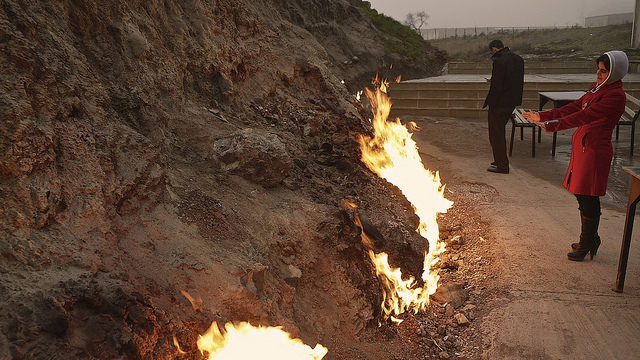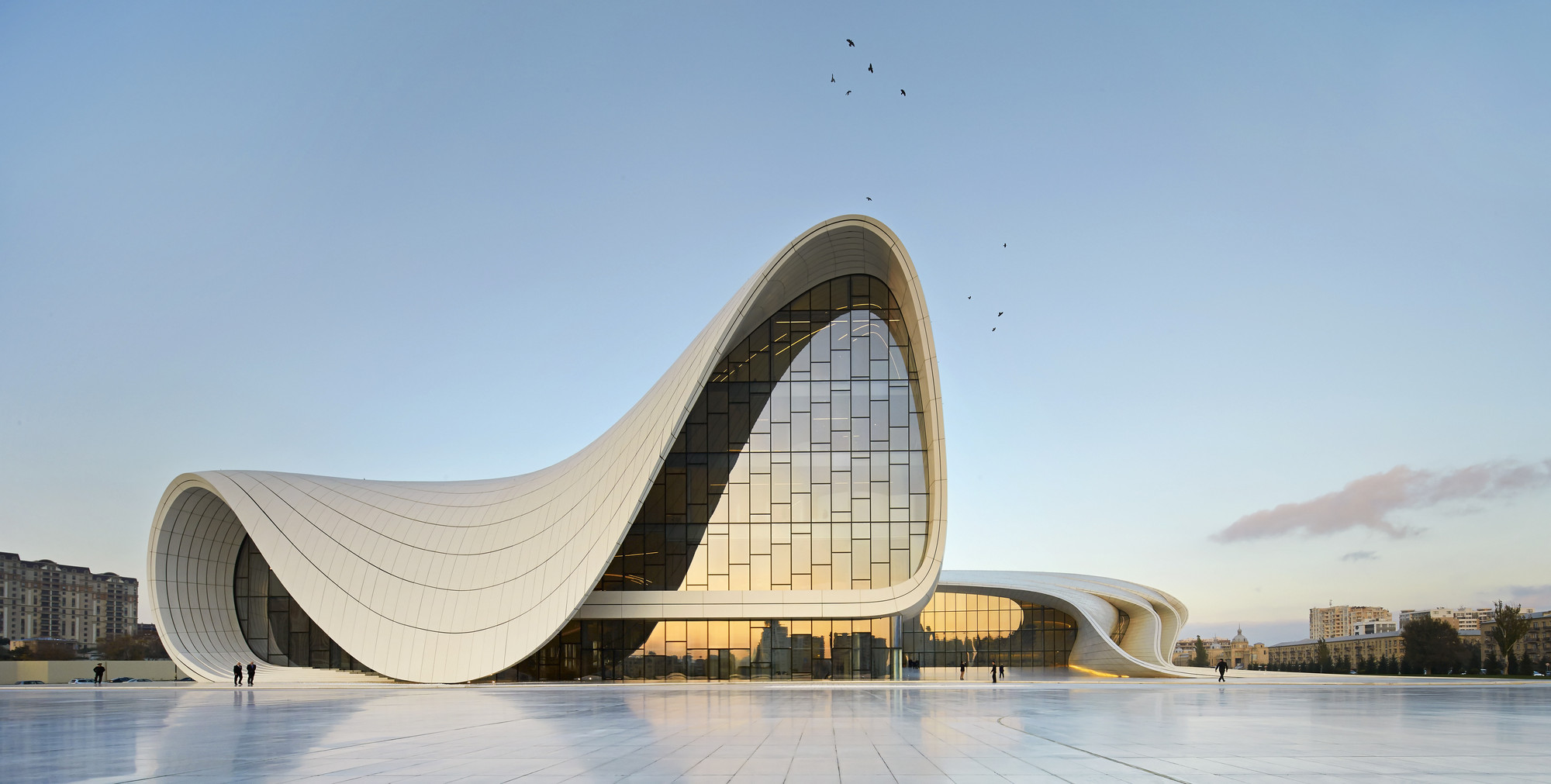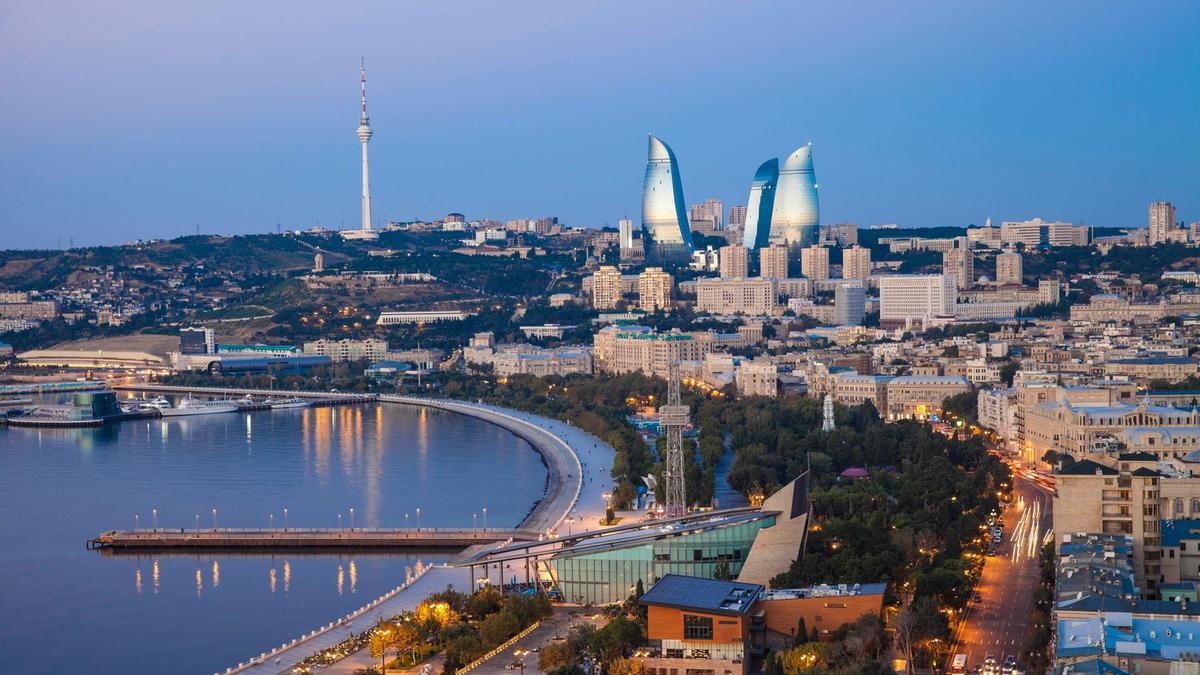Category: Travel
My Conversation with Bruno Maçães
Here is the audio and transcript, here is the opening summary:
Political scientist Bruno Maçães has built a career out of crossing the globe teaching, advising, writing, and talking to people. His recent book, born out of a six-month journey across Eurasia, is one of Tyler’s favorites.
So how does it feel to face Tyler’s rat-a-tat curiosity about your life’s work? For Bruno, the experience was “like you are a politician under attack and your portfolio is the whole of physical and metaphysical reality.”
Read on to discover how well Bruno defended that expansive portfolio, including what’s missing from liberalism, Obama’s conceptual foreign policy mistake, what economists are most wrong about, how to fall in love with Djibouti, stagnation in Europe, the diversity of Central Asia, Hitchcock’s perfect movie, China as an ever-growing global force, the book everyone under 25 should read, the creativity of Washington, D.C versus Silicon Valley, and more.
Here is one bit:
MAÇÃES: This raises deep philosophical questions and political questions. If you want Turkey to become like Europe, then you have to project European power across Turkey. If Europe no longer has that ability, then you shouldn’t be surprised that Turkey looks elsewhere.
It’s very simple. I think I say in the book that in order to be loved, you also have to be feared. This idea that you find in Europe now, that without projecting any kind of power, other countries will be attracted to the European model, that’s a form of utopianism. I just cannot see that happen.
COWEN: So Europe lacks the spirit of adventure.
MAÇÃES: That is certainly the case. I think you see that. One of the areas where the spirit of adventure today is more relevant and important is technology. You see in Europe the idea that technology’s against us, and we should resist this rather than embrace it. A very negative spirit, which I think is a good example of how adventure has disappeared from the European psyche.
And:
COWEN: Russia. Why is Russia as a world power currently underrated?
MAÇÃES: The most impressive thing about Russia is, in fact, something that you might not think at first: the power of organization. We have this image of Russia as a failed state in many respects.
But in order to keep that empire, in order to keep it together throughout the centuries, in order to develop it to some extent, in order to bring together so many ethnicities, so many religions . . . it’s fair to say that Russia has done a better job of integrating its Muslim population, which is close to 15 percent, than any other country, I would argue — certainly any other major country.
The power of the Russian state, the ability to organize, to dispose, to connect, is one of the great political stories of mankind — to see how the Russian state was able to grow and to extend itself. And that’s still there.
Original and highly recommended. Again, here is Bruno’s book The Dawn of Eurasia: On the Trail of the New World Order.
Congestion pricing is not just slanted toward the elite
From Luz Lazo at The Washington Post:
The average user [of the optional toll lanes] is younger than 45 and has a household income of less than $100,000 a year, according to a new survey.
About 60 percent of the frequent users said they have household incomes of less than $100,000, and a similar share have a bachelor’s degree or higher. About one-third of those users said they don’t mind the tolls because their employers pick up the bill, according to the survey.
And this:
They are loyal Amazon customers who get a package from the online retailer at least once a month.
“They don’t mind paying a fee for convenience services and similarly don’t mind paying for tolls,” Bell said.
Congestion pricing in the D.C. area has been a major success. And many of its benefits are overlooked. Consider me, a relatively well-educated and high-income user of the roads. After a few years, I still can’t figure out how to use the new Beltway lanes, and when they let me get off where I want to, or not. So I have never used them once. Still, they clear the rest of the road for me.
What has and has not changed in Guangzhou
That is the topic of my latest Bloomberg column, here is the opener:
I hadn’t been to Guangzhou in more than 30 years, and I wanted to see what I would remember.
And here is one bit:
How about the train ride between Hong Kong and Guangzhou? In 1988 I saw lone farmers plowing the field with their oxen. These days the journey brings you through Shenzhen, China’s tech capital, where many iPhones are assembled and which has eclipsed Guangzhou as a source of economic dynamism.
And yet I cannot conclude that Guangzhou is altogether a story of change and change alone.
That all said, Guangzhou is no longer an economic leader in China. Overall it struck me that Guangzhou has become a bit of an economic backwater, albeit at an enormous size and decent (compared to the rest of China) standard of living.
That was then, this is now
Four decades ago Venezuelans could fly in and out of Caracas’s Maiquetía airport on Concorde. These days they are leaving the country on foot — walking over the border into Colombia, traipsing down the Andes to Ecuador and Peru or trudging through the Amazon basin to Brazil. As the economy collapses, the Venezuelan exodus “is building to a crisis moment”, the UN has warned. Drawing comparisons with the desperate journeys of Syrians and Africans through the Mediterranean in recent years, it says 2.3m people — 7 per cent of the population — have left Venezuela since 2015. On Monday, President Nicolás Maduro put the figure at just 600,000, and his vice-president Delcy Rodríguez said the outflow was “normal”. Outcry over the exodus, she said, was “designed by the Pentagon to justify intervention in Venezuela”.
That is from Gideon Long in the FT.
A note on overtourism, solve for the equilibrium
“At the end, this story is just a numbers problem,” Mr. Tourtellot said. He noted that in 1960, when the jet age began, around 25 million international trips were taken. Last year, the number was 1.3 billion.
As for the cities that are the major destinations? They are “the same size they were back in 1959, and they’ll probably stay that way,” he said.
That is from Farhad Manjoo at the NYT.
Moroccan Medina markets in everything
Stanley emails me:
Since Google Maps and even most paper maps don’t help navigate a visitor around the Fez Medina (particularly the inner non-tourist parts), it creates an interesting markets in directions. Gentleman (nearly all as far as I can tell) stand around the various pedestrian-only streets* (if you can call them that) and offer to help, which usually ends up with them walking alongside you in the direction they think you might want to go (or the place you requested thinking it was simply a free helping hand). At the end of the partnered walk they ask for money (even though they insisted it was free or pretend they didn’t hear you ask before embarking). While most people would see this as a “tourist trap” (and it certainly is), the more interesting part to me (as a former econ major and MR enthusiast) is the the market problem – that is, lack of technology/tools and asymmetric information – is paired with a market solution, which is the locals providing only the information they know (directions)…In very minimal engagement in the market I found a piece of information cost between 5 to 20 dirham ($0.50 to $2.00) depending on the length of service (how far they walk with you) and your ability to negotiate.
*Singapore, Singapura: From Miracle to Complacency*
By Nicholas Walton, here is my blurb for the book:
“What better way to discover Singapore than to walk across it? In this splendid book, Walton serves up riches of the island’s history, geography, economics, and, most of all, serendipity.”
Due out March 1, pre-order here.
Azerbaijani road trip
About half the world’s mud volcanoes are in Azerbaijan, and some good ones are about an hour’s drive from the edge of Baku.
I saw a Koch Industries truck parked about ten miles down the road.
The Zoroastrian Fire Temple attracts scores of Indian tourists, unlike anything in Baku. It dates mostly from the 18th century. And:
Yanar Dag (Azerbaijani: Yanar Dağ, meaning “burning mountain”) is a natural gas fire which blazes continuously on a hillside on the Absheron Peninsula on the Caspian Sea near Baku, the capital of Azerbaijan (a country which itself is known as “the Land of Fire“). Flames jet into the air 3 metres (9.8 ft) from a thin, porous sandstone layer.
World’s busiest air routes, 2017.
1. Jeju to Seoul
2. Melbourne to Sydney
3. Mumbai to Delhi
4. Fukuoka to Tokyo
5. Rio de Janeiro to Sao Paulo
6. Sapporo to Tokyo
7. LA to San Francisco
8. Brisbane to Sydney
9. Cape Town to Johannesburg
10. Beijing to Shanghai
Here is the source. Via Henry Farrell. It is striking how poorly America and of course Europe fare on this list.
Baku bits, what to see in Baku
The vertigo starts, as upon arrival in the airport there are few direct clues as to which country you might be in. You will see people from every part of this hemisphere, and furthermore the Azerbaijanis won’t stand out as such. The facility itself looks like an average of five or six other airports, like how some TV shows film in Canada to get that generically American look.
Matters seem to go downhill as one rides into town — “Dubai, yet without the charm” is how I described it to Yana in an early, premature email. Yet this petro-city grows on you quickly, and I don’t just mean the cherry jam. Closer to town center there are interesting buildings in every direction, and of three sorts: the medieval Old City with walls, a blossoming of late 19th century European architecture (and they are still doing contemporary copies of it), and the Brasilia-Dubai like modern buildings.
In 1905 about half of the world’s oil was produced in or near Baku. In 1942, it was Stalingrad that stopped Hitler from taking the place over and perhaps changing the course of history. Not long ago, oil and gas were estimated to account for sixty percent of the gdp of Azerbaijan.
And you can see that money being spent, to the benefit of the tourist I might add. Baku has perhaps the most attractive and walkable seaside promenade. The walker has views of the Caspian, of spectacular buildings, of the port, and there are multiple paths with beautiful gardens and cactuses and baobab trees, benches everywhere, Eurasians in abundance, and in August the weather is perfect for a long stroll every night.
Baku is reputed to be the world’s lowest capital city, standing about 28 meters below sea level.
It is the first Shiite country I have visited, and it seems less conservative than say the Turkey of ten years ago, for instance in terms of dress and demeanor. A small percentage of women wear burkhas, most of all by the seaside walk, but the look of their companions suggests most are tourists or expats.
In short, several generations of communist-enforced atheism do have a persistent effect. One Azerbaijani, with whom I had an extended dialogue through a translator, stressed to me how much universal Soviet education elevated the region (and she was not pro-Soviet or pro-communist by any means). The Azerbaijanis address me in Russian, as few can converse with ease in English.
The police go to great lengths to limit jaywalking, which is in any case dangerous. The city roads are wide, and like some parts of central Brasilia have few traffic lights. Never have I wished so often that I was on the other side of the street as in Baku.
Baku has three working synagogues, and, unlike in almost every other country in the world, they do not require police protection. It is a remarkably safe city.
There is strong sentiment here that Nagorno-Karabakh, technically a part of Azerbaijan but not controlled by the government in over twenty years, is ruled by “Armenian terrorists,” backed by Putin. This issue, largely neglected outside the region, is likely to flare up again. When I applied for a visa, I had to answer whether I come from Armenian blood (no). It seems like a much less friendly conflict than say between the Israelis and the Palestinians.
Baku was the easternmost part of the Roman Empire — does that make it European?
“Relatives may eat your flesh but they won’t throw away your bones” is an old Azerbaijani saying.
Newborns are washed in salt water, to make them truthful and bold.
As a vacation spot, I recommend three to four days here for anyone looking for something off the beaten path, but without logistical difficulties. Here is Wikipedia on Baku.
A dialogue in Seherli Tandir restaurant, this evening
There are three tables, all close enough to chat, and at them there was TC, a Saudi family with a husband, two kids and a woman in full burkha, and a woman from a fine New York City neighborhood, perhaps 65 years old. Suddenly, the NYC woman paused from her chat with me:
NYC woman, to Saudi table: (With a strong NYC accent) So where are you all from?
Saudi Man: Saudi Arabia.
NYC woman: Is that your wife in there?
Saudi Man: Yes.
NYC woman: Is she driving yet?
Saudi Man: No
NYC woman: Why not?
Saudi Man: She does not need to.
NYC woman: I was just wondering, because they made such a big deal out of it on TV. And I was thinking maybe they aren’t all driving yet.
Saudi Man: She does not need to.
NYC woman: But why not?
Saudi Man: Madam, you live in New York City. Are you driving yet?
Which ten restaurants would you most want to live next door to?
Seherli Tandir, in Baku, Azerbaijan is now on my list, but let me first explain the criteria. This is not about the best restaurants, it is about the ones that give you the most consumer surplus. For most of the “next door restaurants,” as I shall call them, you want them to be inexpensive, to offer some healthy options, to satisfy some of your cravings, to offer unique dishes, and not to take too long serving you.
It is not a mistake, if you are visiting Baku, to simply have each and every one of your meals at Seherli Tandir — the other restaurants in town are dominated assets.
The menu allows you to order three different types of cherry jam. Get the one in the middle, the sour one (don’t let them tell you that you should not be ordering a jam, and don’t put it on anything, just eat it).
Have I had better yogurts and rices? Order the little dumplings with sumac (gurza), asking for yogurt sauce on the side. The qutabs — thin breads stuffed with either pumpkin or meat — are the surprise knock-outs. The soups, the stews, the dolmeh. Did I mention the pilaf with the chestnuts? The “tandir” bread-baking oven in the middle of the restaurant?
The typical entree costs about $4-6. And the staff is friendly and helpful.
The restaurant is located in the old city, on the “restaurant street,” near four or five other excellent but nonetheless inferior options (when in doubt in those order dishes with pomegranate seeds). Go to the tower, and start walking up to the right, maybe 5-7 minutes. No taxi can take you there, as it is in a pedestrian zone. Simply ask when you get lost, as the restaurant is quite famous. You can’t make a reservation and may need to wait out in the sun, thus another reason why it should be next to my home
In general, Azerbaijani food lies in the space between Persian and Georgian cuisines, a double yum.
Which other restaurants should be in the top ten you want right next to your home? And why aren’t those restaurants simply the best period?
p.s. watermelon jam tastes better than you think.
What should I ask Bruno Maçães?
I will be doing a Conversation with him. Bruno is the author of Dawn of Eurasia: On the Trail of the New World Order, published earlier in the United Kingdom but just now in the United States. It is one of the essential reads of the last few years and was last year a tied favorite for my “Book of the Year.”
On the book:
Well, it turns out there is a book explaining all the recent, strange events in China, Russia, Turkey and the European Union
Here is his excellent recent piece on what the West is becoming, and why. I also have read he is currently writing a book on China’s “One Belt, One Road.”
On Bruno, here is one bit from Wikipedia:
Bruno Maçães is a Portuguese politician, political scientist, business strategist, and author. He studied at the University of Lisbon and Harvard University, where he wrote his doctoral dissertation under Harvey Mansfield. He is currently a Nonresident Senior Fellow at Hudson Institute in Washington.
My Conversation with Bruno is in fact one reason why I took my August trip to Kiev and Baku — what better and indeed necessary way to prepare for a discussion of Eurasia?
So what should I ask him?
Baku bleg
What should I see and where should I eat? I will be there soon, and any assistance or advice you can offer is much appreciated, thanks!
My favorite things Ukraine
I am just arriving, and for the first time Here are my favorites:
1. Pianist: Emil Gilels, most of all for Beethoven and Chopin. Vladimir Horowitz was born in Kiev, he was often best in unusual pieces, such as Scriabin, Prokofiev, and John Philip Sousa. But there is also Cherkassy, Pachmann, Moiseiwitsch, Lhevinne, and others. Simon Barere was one of the greatest Liszt pianists. So we are into A++ territory here. But wait…Richter was born in Ukraine! My head is exploding now.
1b. Violinists: You’ve got Nathan Milstein, Mischa Elman, Isaac Stern, Leonid Kogan, the Oistrakhs, among others, with Milstein’s Bach recordings as my favorite.
2. Composer: Prokofiev was born in eastern Ukraine (or is it now Russia again?), but somehow I don’t feel he counts. Valentin Sylvestrov would be an alternative.
3. Novelist: One choice would be Nikolai Gogol, then Mikhail Bulgakov, born in Kiev but ethnically Russian. But I can’t say I love Master and Margarita; it is probably much better and funnier in the original Russian. His The White Guard is a more directly Ukrainian novel, and it should be better known. A Country Doctor’s Notebook is perhaps my favorite by him. For short stories there is Isaac Babel. Joseph Conrad was born in modern-day Ukraine, though I don’t feel he counts as Ukrainian, same with Stanislaw Lem. Vassily Grossman is a toss-up in terms of origin. The Brazilian author Clarice Lispector, now very much in fashion, was born in Ukraine.
4. Movie: Alexander Dovzhenko’s Earth, a 1930 take on agricultural collectivization. With Dovshenko as my favorite director.
5. Movie, set in: Man With a Movie Camera. It is remarkable how fresh and innovative this 1929 silent film still is.
6. Painter: David Burliuk, leader of the Ukrainian avant-garde and later member of the Blue Rider group. Ilya Repin was born in modern-day Ukraine, though he feels “Russian” to me in the historical sense.
7. Sculptor: Alexander Archipenko was born in Ukraine, though he ended up in America.
8. Economist: Ludwig von Mises. He was born on territory near current-day Lviv, part of Ukraine.
9. Actress: Milla Jovovich is pretty good in The Fifth Element and Resident Evil.
10. Tech entrepreneur: Max Levchin.
11. Israeli: There is Golda Meir, Natan Sharansky, and Simon Wiesenthal, among others.
12. Legal scholar, blogger, and First Amendment advocate: Eugene Volokh. And don’t forget Sasha!
Other: Wilhelm Reich deserves mention, though I’m not really a fan. The region produced a few good chess players too.
Overall, this is a stunningly impressive list, though there are legitimate questions as to who and what exactly counts as Ukrainian. They’re still trying to sort that one out, which is part of the problem.






